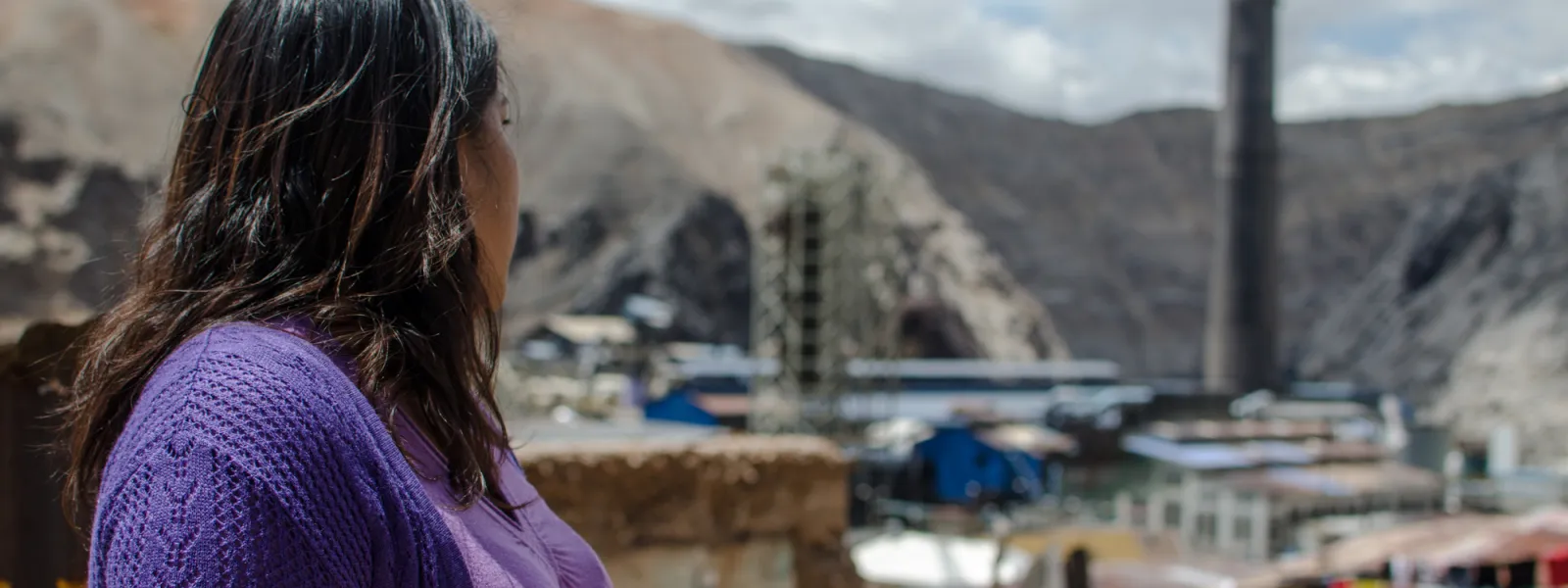
Project
Protecting the health of La Oroya's residents from toxic pollution
For more than 20 years, residents of La Oroya have been seeking justice and reparations after a metallurgical complex caused heavy metal pollution in their community—in violation of their fundamental rights—and the government failed to take adequate measures to protect them.
On March 22, 2024, the Inter-American Court of Human Rights issued its judgment in the case. It found Peru responsible and ordered it to adopt comprehensive reparation measures. This decision is a historic opportunity to restore the rights of the victims, as well as an important precedent for the protection of the right to a healthy environment in Latin America and for adequate state oversight of corporate activities.
Background
La Oroya is a small city in Peru’s central mountain range, in the department of Junín, about 176 km from Lima. It has a population of around 30,000 inhabitants.
There, in 1922, the U.S. company Cerro de Pasco Cooper Corporation installed the La Oroya Metallurgical Complex to process ore concentrates with high levels of lead, copper, zinc, silver and gold, as well as other contaminants such as sulfur, cadmium and arsenic.
The complex was nationalized in 1974 and operated by the State until 1997, when it was acquired by the US Doe Run Company through its subsidiary Doe Run Peru. In 2009, due to the company's financial crisis, the complex's operations were suspended.
Decades of damage to public health
The Peruvian State - due to the lack of adequate control systems, constant supervision, imposition of sanctions and adoption of immediate actions - has allowed the metallurgical complex to generate very high levels of contamination for decades that have seriously affected the health of residents of La Oroya for generations.
Those living in La Oroya have a higher risk or propensity to develop cancer due to historical exposure to heavy metals. While the health effects of toxic contamination are not immediately noticeable, they may be irreversible or become evident over the long term, affecting the population at various levels. Moreover, the impacts have been differentiated —and even more severe— among children, women and the elderly.
Most of the affected people presented lead levels higher than those recommended by the World Health Organization and, in some cases, higher levels of arsenic and cadmium; in addition to stress, anxiety, skin disorders, gastric problems, chronic headaches and respiratory or cardiac problems, among others.
The search for justice
Over time, several actions were brought at the national and international levels to obtain oversight of the metallurgical complex and its impacts, as well as to obtain redress for the violation of the rights of affected people.
AIDA became involved with La Oroya in 1997 and, since then, we’ve employed various strategies to protect public health, the environment and the rights of its inhabitants.
In 2002, our publication La Oroya Cannot Wait helped to make La Oroya's situation visible internationally and demand remedial measures.
That same year, a group of residents of La Oroya filed an enforcement action against the Ministry of Health and the General Directorate of Environmental Health to protect their rights and those of the rest of the population.
In 2006, they obtained a partially favorable decision from the Constitutional Court that ordered protective measures. However, after more than 14 years, no measures were taken to implement the ruling and the highest court did not take action to enforce it.
Given the lack of effective responses at the national level, AIDA —together with an international coalition of organizations— took the case to the Inter-American Commission on Human Rights (IACHR) and in November 2005 requested measures to protect the right to life, personal integrity and health of the people affected. In 2006, we filed a complaint with the IACHR against the Peruvian State for the violation of the human rights of La Oroya residents.
In 2007, in response to the petition, the IACHR granted protection measures to 65 people from La Oroya and in 2016 extended them to another 15.
Current Situation
To date, the protection measures granted by the IACHR are still in effect. Although the State has issued some decisions to somewhat control the company and the levels of contamination in the area, these have not been effective in protecting the rights of the population or in urgently implementing the necessary actions in La Oroya.
Although the levels of lead and other heavy metals in the blood have decreased since the suspension of operations at the complex, this does not imply that the effects of the contamination have disappeared because the metals remain in other parts of the body and their impacts can appear over the years. The State has not carried out a comprehensive diagnosis and follow-up of the people who were highly exposed to heavy metals at La Oroya. There is also a lack of an epidemiological and blood study on children to show the current state of contamination of the population and its comparison with the studies carried out between 1999 and 2005.
The case before the Inter-American Court
As for the international complaint, in October 2021 —15 years after the process began— the IACHR adopted a decision on the merits of the case and submitted it to the Inter-American Court of Human Rights, after establishing the international responsibility of the Peruvian State in the violation of human rights of residents of La Oroya.
The Court heard the case at a public hearing in October 2022. More than a year later, on March 22, 2024, the international court issued its judgment. In its ruling, the first of its kind, it held Peru responsible for violating the rights of the residents of La Oroya and ordered the government to adopt comprehensive reparation measures, including environmental remediation, reduction and mitigation of polluting emissions, air quality monitoring, free and specialized medical care, compensation, and a resettlement plan for the affected people.
Partners:
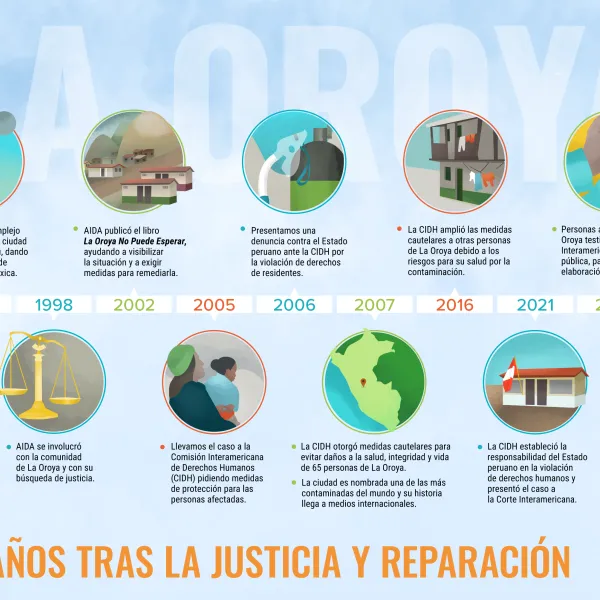
Related projects
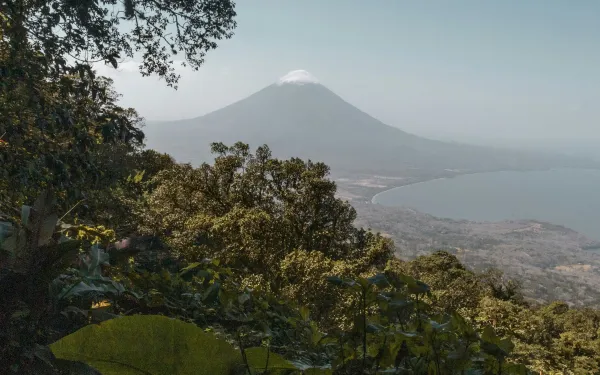
Leading participatory monitoring processes for Green Climate Fund financed projects
The Green Climate Fund (GCF), a multilateral climate fund under the United Nations Framework Convention on Climate Change (UNFCCC), allocates funding for projects and programs aimed at reducing greenhouse gas emissions and building resilience to climate change impacts in developing countries. To date, the GCF board has approved 243 projects worldwide, committing 13.5 billion USD in total. Notably, approximately 26% of these projects and programs target Latin America.This financial mechanism has become a lynchpin of the climate finance architecture, challenging conventional approaches to international projects. It is governed by a board with equal representation from developed and developing countries (UNFCCC designations); robust environmental and social policies rooted in human rights; an indigenous people’s policy, backed by an advisory group that interfaces with the Secretariat and the Board; a stated preference for maximal information disclosure; a seat for active observers representing civil society organizations; strong ties to the UNFCCC and the Paris Agreement; and an explicit mandate to include a gender perspective. In fact, all approved projects and programs are required to integrate a Gender Action Plan (GAP). In addition, the GCF is mandated by its own policies to facilitate stakeholder participation mechanisms. These mechanisms encompass representation from diverse sectors, including the private sector, civil society organizations, vulnerable groups, women, and indigenous peoples.Though implementation of these safeguards and progressive policies is far from perfect, their existence lays the groundwork for stronger future implementation. Civil society, including feminist movements and organizations, engage with the GCF as a climate finance mechanism that should continue to be strengthened. The explicit analysis and commitment mandated for each project regarding social and gender considerations not only facilitate engagement but also uphold accountability.In late 2022, partner organizations of the Global Alliance for Green and Gender Action (GAGGA), including the International Analog Forestry Network (IAFN), Asociación Interamericana para la Defensa del Ambiente (Interamerican Association for Environmental Defense, AIDA), Fondo Centroamericano de Mujeres (Central American Women’s Fund, FCAM), Fondo Tierra Viva (Tierra Viva Fund) and Women’s Environment and Development Organization (WEDO), collectively launched a pilot initiative. The project aimed to facilitate participatory monitoring of the implementation of the project FP089 Upscaling climate resilience measures in the dry corridor agroecosystems of El Salvador (RECLIMA). 3 RECLIMA was approved by the Board of Directors of the GCF during its 21st meeting (B.21) in 2018. For the fieldwork, an alliance was formed with Unidad Ecológica Salvadoreña (Salvadorean Ecological Unit, UNES), a local ecofeminist NGO advocating for environmental and gender justice in El Salvador.The main objective of this project was to pioneer a participatory monitoring process for a GCF-funded project, with specific emphasis on gender equality. Each participating organization approached this collaborative initiative with genuine curiosity, eager to explore its feasibility and potential impact. There was also a collective commitment to openly share information about the process, results, challenges, and lessons learned. This report aims to summarize the outcomes of this exercise, providing an overview of the RECLIMA project and highlighting the importance of gender equality and participatory monitoring within climate projects; as well as sharing primary findings and key recommendations, tailored to GCF Accredited and Executing Entities. Read and download the report
Read more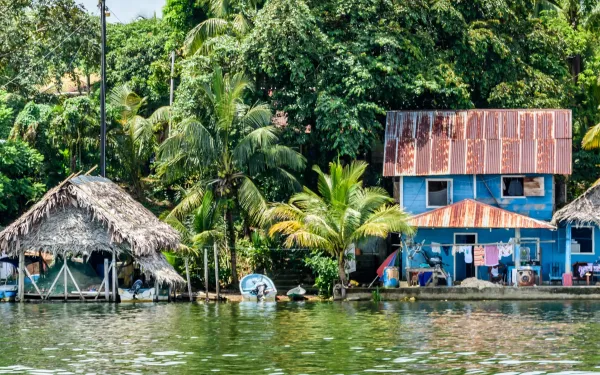
How the Inter-American Court can help protect human rights in the face of the climate emergency
The climate crisis has been identified as the most urgent problem facing humanity and the greatest threat to human rights. In this context, what obligations do States have to protect people, especially those in vulnerable situations, from its effects? The Advisory Opinions of the Inter-American Court of Human Rights provide a powerful answer to this question, since their purpose is to specify the content and scope of the obligations to protect human rights that the States of the Americas have under their domestic laws and the treaties or conventions they have signed. The international court is currently in the process of issuing an advisory opinion to clarify these obligations, specifically regarding the climate crisis. The interpretations provided by the Court in this case will strengthen the arguments of organizations, communities, and other actors who decide to initiate climate litigation before national or international tribunals. It’s important, then, to understand what these advisory opinions are, why they are important, and how they relate to climate litigation; as well as this opinion’s potential for moving the region toward climate justice. What are the Advisory Opinions of the Inter-American Court of Human Rights? The Advisory Opinions of the Inter-American Court are pronouncements issued by this international court—at the request of both the members of the Organization of American States (OAS) and of some of its affiliated organizations—in order to interpret international treaties such as the American Convention on Human Rights, to clarify their scope, to determine the specific obligations they impose, and to develop the guarantees they provide to the inhabitants of the continent. They are important because they consolidate the correct understanding of human rights and thus guide States on how to guarantee and apply them within their territory or jurisdiction. A clear example is Advisory Opinion 23 of 2017, in which the Court set a historic precedent by recognizing the right to a healthy environment as fundamental to human existence and for the first time pronouncing on the content of this right. These declarations contribute to a better understanding of the obligations, authorizations and prohibitions deriving from each of the rights recognized in the international treaties signed by the countries of the continent. They therefore constitute a relevant element in determining the responsibility of a State for possible human rights violations resulting from its actions or omissions. What is the process by which advisory opinions are issued? Any member of the OAS or any of its member institutions may request an advisory opinion to ask the Inter-American Court how to interpret its provisions or those of "other treaties for the protection of human rights" in the hemisphere. The questions must be specific and justified. Once the consultation is received, the Court informs all member states and the organs of the Inter-American Human Rights System so that they may submit their written comments. At the same time, a period of time shall be opened for any interested person or entity to submit to the Court its considerations on the issues raised and how they should be resolved. The Court will then, if it deems it necessary, convene oral hearings to hear the States and other actors involved in the process. It may also ask questions and seek clarification on the written submissions it has received. The Court will then deliberate the matter in closed session and adopt the relevant decision, which will be communicated by its secretariat to all parties to the proceedings. How do advisory opinions contribute to climate litigation? Climate litigation has emerged as an important and increasingly popular tool in the fight against the climate crisis. It is essentially strategic litigation that seeks broad societal change through judicial decisions that hold governments, corporations, and stakeholders accountable for the causes and impacts of the climate crisis. Advisory opinions of the Inter-American Court can help achieve these judgments by providing authoritative interpretations of human rights treaties adopted by states in the region. They serve as a legal benchmark for judging the actions or inactions of state entities and private actors under their control that have exacerbated or threaten to exacerbate the climate crisis. Treaties such as the American Convention on Human Rights establish guarantees for life with dignity, personal integrity and health, which can be invoked before courts as a basis for the obligations of States to adopt actions to adapt to and mitigate the climate crisis. Thus, the advisory opinions offer solid arguments to demand compliance with such actions as a way to protect human rights. Opportunities of the ongoing advisory opinion for climate justice In January 2023, Colombia and Chile requested an advisory opinion from the Inter-American Court to clarify the scope of States' human rights obligations in the context of the climate emergency. Both States stated that their populations and others in the continent are suffering the consequences of the global crisis, particularly due to droughts, floods, and fires, among others. Therefore, they consider it necessary for the Court to determine the appropriate way to interpret the American Convention and the rights recognized therein "in what is relevant to address the situations generated by the climate emergency, its causes and consequences." This will be the first time that the international court will rule on the mandates, prohibitions, and authorizations to be derived from human rights in the specific context of the negative impacts of the climate emergency on individuals and communities in the continent. Once issued, this advisory opinion will clarify the legal obligations of Latin American states to address the climate crisis as a human rights issue. The Court's opinion could compel governments to recognize their competence to reduce greenhouse gas emissions, support adaptation measures, and establish mechanisms to address loss and damage. Given this unique opportunity, AIDA is participating in the public consultation convened by the Court before it issues its Opinion. We have submitted a legal brief with arguments demonstrating the existence of an autonomous human right to a "stable and safe climate" as part of the universal right to a healthy environment, and the consequent obligations of states to prevent and avoid the harmful effects of the climate emergency on their inhabitants. In addition, we are supporting diverse communities in the region to bring their voices to the process and be heard by the Court by submitting other legal briefs that highlight the socio-environmental impacts of the climate emergency on indigenous peoples, women, children, populations with diverse gender orientations and identities, and fragile ecosystems such as coral reefs. We are also supporting the participation of community representatives in the hearings of the case, which the Court has scheduled for April and May in Barbados and Brazil, respectively. The climate justice movement in Latin America and around the world is growing stronger and more effective, fueled by successful climate litigation and important precedents such as the advisory opinions of the Inter-American Court of Human Rights.
Read more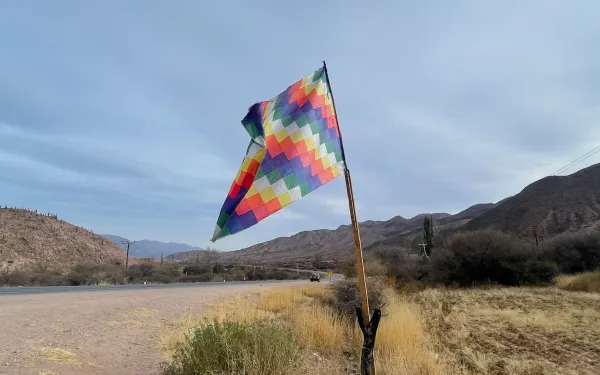
Argentina: the scramble for lithium threatens the rights of Indigenous Peoples in Jujuy
International civil society organisations with extensive experience in the defence of the environment and human rights present the conclusions of an observation mission to the Argentinian province of Jujuy in August 2023 following the constitutional reform approved in June of the same year, which facilitates lithium extraction. Paris and San Salvador de Jujuy. In a report published today, ten international civil society organisations with extensive experience in human rights and environmental issues warn that the lack of prior consultation of the 11 Indigenous Peoples of Jujuy in the approval process for the reform of the provincial constitution is incompatible with international human rights and environmental standards.The report also denounces that the new Jujuy Constitution authorises productive activities on public lands, which opens the door to the implementation of extractive projects in Indigenous ancestral territories, without guaranteeing prior, free and informed consultation with the communities. It also approves the large-scale use of water, which facilitates the use of an essential resource for the survival of Indigenous Peoples for the exploitation of lithium, an activity with a high water footprint.The constitutional reform process is framed in a context of mining deployment in the high Andean wetlands of Jujuy, whose watersheds are located in the area known by the mining industry as the "lithium triangle", located on the borders of Argentina, Bolivia and Chile. This area is so named because it is the largest, most easily extractable and economically profitable lithium reserve in the world."We denounce the permanent and disproportionate restriction of the right to social protest introduced by the Jujuy constitution - in particular the general prohibition of road and street blockades, which are not only a legitimate form of peaceful demonstration, but are also protected by international law," the organisations point out.The report also highlights the testimonies of victims of police repression, who suffered arbitrary detentions and serious physical injuries caused by the excessive and unjustified use of force. It also documents the cases of protesters who are currently facing arbitrary and disproportionate criminal proceedings for participating in and promoting public demonstrations against the constitutional reform.In light of the findings presented in the report, the organisations:Request compliance with the international obligations of the Argentinian State to guarantee the protection of the collective property of Indigenous communities over their ancestral territories, as well as to guarantee the right to water intended for human consumption and the reproduction of life.Urge the authorities to refrain from promoting regulations that restrict the ways, places or times in which citizens can exercise their right to demonstrate publicly.Make an urgent call to the judiciary to assess, based on a rigorous examination of international human rights standards, the probable unconstitutionality of the approval process for the reform and its contents. Relationship between the events in Jujuy and the reforms promoted by Javier Milei’s governmentThe analysis offered in the report on what happened in Jujuy is especially relevant in the current national context because President Javier Milei’s national government has followed a similar line to the trend observed in Jujuy of promoting reforms that deepen an extractivist model in protected ecosystems of the country. This occurs while eliminating frameworks for the protection of human and environmental rights and facilitating the repression and criminalisation of legitimate protests, as detailed in the report.Through Decree of Necessity and Urgency No. 70/2023, President Milei repealed the Land Law (26.737) on 20th December 2023, eliminating restrictions aimed at preventing land grabbing by foreign investment projects. In addition, the "omnibus" bill proposes to repeal environmental protection laws to facilitate economic activities in ecosystems such as native forests and glaciers.These measures, similar to those implemented in Jujuy, were accompanied by disproportionate restrictions on the exercise of the right to protest. For example, on 14th December 2023, the executive approved the "protocol of anti-picketing action", which considers any demonstration that interrupts or decreases the movement of people a flagrant offence, requiring police intervention. Read the report
Read more